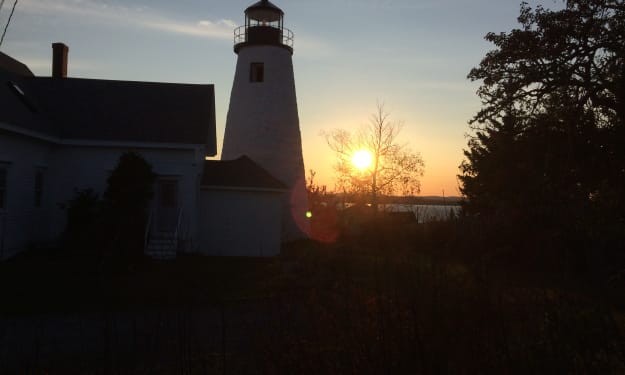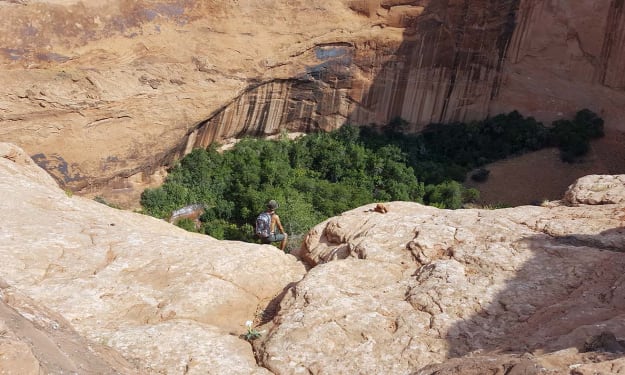The Stylish Traditional Art of Ngmayem Festival, Ghana
Ghana

So I arrived at the grounds with so many expectations. I had followed and watched highlights of the Ngmayem festival on television. I was so anxious to be a part of it. Of course, I expected a huge crowd, but thankfully, the crowd control barrier was there to calm things down. A melodious sound interspersed with songspiel welcomed me to the grounds of the Ngmayem festival.
The famous festival Ngmayem is held on the last Friday of October each year. The traditional Manya Krobo system consists of a traditional council and several chiefs and queens. The council is headed by one paramount chief who oversees all the communities in the region. Majority of the people who reside in the town are Krobos. Historically, Krobos moved from one place to another, and then acquired a big land from the Akyems (residents from the eastern region of Ghana) and settled.
Overview of Manya Krobo District
- Region: Eastern Ghana
- Capital: Odumase Krobo
- Area: 819 km²
- Population: 104,888
- Location: Southeast
- Language: Dangme
- Climate: Within the semi-equatorial climate belt with a mean annual rainfall ranging between 900 mm to 1,500 mm.
How to Reach Manya Krobo (Southern Ghana)
When you arrive at Ghana International Airport as a foreign guest, you must drive 120 km from Accra to Manya Krobo. Approximately one hour and 50 minutes by car to the city (1.56 minutes). With cautious driving, you are expected to arrive safely in the southeastern city of Manya Krobo. With a token amount of GHC 40, which is $8.15, be prepared for a safe journey.
Accommodation
The best places of relaxation are here to welcome all visitors to Manya Krobo. They're very affordable. One of them is the Silvertet Resort. This is a good place to espy, if you have not. The hotel has a restaurant, a bar/lounge, home service, and excellent amenities. Other nearby hotels include the Queen's Tavern Bar and restaurant, and few other ones that have the quality to embrace everyone.
Brief History of the Krobos (Klo li)
The first great leader of Krobo was King Odonkor Azu (1835–1867). After some migrations, the people thought that they will get a bold leader who can handle them under any circumstances. Fingers were pointed to Odonkor. He began to build a formidable force for Krobo, and was later replaced by other wise leaders, Nene Sakite I (1867-1892) and Nene Sakite II in 1997, but in 1944 King Nene Azu Mate modernized the Ngmayem festival style at that time. All the kings in their own way, moved the unification of Krobo to a beautiful new culture.
Main Occupation of the Krobos
Agriculture is the main activity of the Krobos or Klolis. 73 percent of the Krobo population are farmers. Planting palm trees is the driving force of the Krobo people, but it also produces crops such as corn, cassava, Vigna, and vegetables. Mango and oil palm trees are planted on a large scale. In the field, animals including non-traditional ones such as poultry, sheep, goats, pigs, cows, and grasscutters are also reared here. When you visit Manya Krobo, you do not need to be told the people are palm tree farmers. Trees are scattered around the city after every 20 minutes walk, making the scenery breathtaking. Dawadawa, Palm, Mango, Ceiba, Neem, and Acacia (Acacia nilotica) are some of the beautiful trees you observe.
The Main Festival
The Ngmayem Festival is a special harvest celebration that takes place in March and October every year by the people of Manya Krobo in the southeastern part of Ghana. Its been organized since 1944 to advocate for tribal unity. Strangely, this festival came to stay to replace an old Nadu fetish dance cult, which was in existence, but was wiped out due to the impact of modernity and several other reasons. As the name indicates, at the time, the Nadu fetish dance cult festival was celebrated by priests only.
The Ngmayem Festival is a special harvest festival held annually by the Crobo Manjans in southeast Ghana in March and October. It has been held since 1944 to maintain the unity of the tribes. It is strange to replace the old dance of naked fetish, which was destroyed due to the influence of modernity and several other reasons for this festival. As the name suggests, the Nada Festival is celebrated only by a priest.
In spite of that, it was quickly changed by the late paramount chief Oklemekuku Azu Mate Kole II to rather promote solidarity among the people, and to mobilize the people for development rather than the weird cult practices. The Ngmayem festival has another aim of serving as a reminder of the end of a famine that happened hundreds of years ago.
Why this name–Ngmayem? The name Ngmayem originated from the special importance given to the grain (millet) by the Krobos called ngma. The importance given to the millet was traditionally for the survival of the tribe of Manya Krobo. Historically, when the Krobos went for a short stay on the mountain, there was virtually nothing to eat until they had millet (Ngma) as their main food up there. It is now a marketable food for the Krobos, and eaten with okro and leaves. According to them, the leaves are nutritious and healthier than other food crops. There are other traditional foods that are given much recognition for this colourful festival. Mashed yam, palm soup, and roasted corn are the main meals used for the Ngmayem. One interesting thing prior to the festivity is that there are other small rites performed throughout the harvest month to whet the appetite of patrons before the main festival that attracts people from all over the world. They include dances, marriages, and naming ceremonies, and other traditional rituals planned to strengthen relationships, and allegiances within the Manya Krobo tribe.
Events of the Festival
My anticipation for the festival was exceeded with so much joy. The colourful dresses, cloths, beads, and a special footwear purposely for the occasion were in abundance. Special blessing, cleansing, and thanksgiving ceremonies were all demonstrated. Another important ceremony that is not left out of this special occasion is the visitation of royal tombs, and the honour given in memory of the ancestors of Krobo. Celebrants and attendees of the festival come looking good in colorful attires with sparkling beads to match. Besides these, the endeavor is used as a specific platform to address the masses major developmental projects affecting the people of Krobo. One of such is the border disputes that has been a thorn in the flesh of the Krobos for so many years. One other unique rite widely known and performed is Dipo.
The Dipo is a puberty rite performed for young adolescent girls who are of sexual age. It is done to usher the girls into adulthood by publicly making it known to all the people. In all intents and purposes, Dipo is a positive rite that initiates every young woman into knowing her responsibilities before stepping into marriage or any sexual relationship. They go almost naked before it is performed.
Maximum Security
On arrival to the ground of the durbar, you will be amazed to see a special parking lot made for visitors, especially foreign nationals who have come to join in the celebration. It is so large that it can contain more cars and motorcycles, which could have been an impediment for coming to join in the celebration.
Time of Celebration - Ngmayem Festival
Twenty weeks before the main Ngmayem event begins, a small festival called Koda is pre-organised to allow the people of Kroboto to prepare well, and to put away all obstacles before the great occasion comes off.
From time immemorial, Ngmayem has been held annually in the month of October. It is honoured to recognize the harvest season, and to cherish the beautiful tribal unity between people of the town and nearer villages. Additionally, it is to educate the younger generation about their long history, and to show respect to the ancestors by remembering them on this special occasion. With such a glamorous event, most people of Krobo take advantage of it to perform marriage rites, and to resolve family disagreements that have been in existence for a long time. Its just beautiful to see unified families hugging, and cheerfully forgiving each other for any difference of opinion that they may have between them. Each year, during the satiation or hunger season, Ngmayem is celebrated to mark the millet grain harvest. This depicts the importance given to the grain by the Krobos. It was and is highly recognized as a 'savior' food during their stay on the mountain decades ago. After migrating from one place to the other, they finally stepped out into a new way of life.
Special Rites Performed at Ngmayem
I had the chance to delve deep into the secret rites of the Krobos executed at the festival.
Apart from the planting of millet as the main rite, there is a special one of passage called the Kodakpami. Priests of the land lead the 'most wanted' people of Krobo to confess their hidden and personal evil sins, which are contrary to societal norms. Murder and rape are few of them. Deities will then cleanse and bless the confessors, and counsel them to abstain from these barbaric attitudes.
Officially, after seventy (70) days celebration of the Kodakpami, the millet grain is reaped for eating. The first stage is the offering of the first yam called the Kwojofomi.
A fresh yam is presented to the gods of the town before the foremost priest can even consume it. Traditionally, this is purposely for the cleansing and blessing of the yam, and also for the sanctification of the throat to be able to enjoy the yam proper. However, during the pouring of libations, prayers for strength, children for the barren, riches, abundant food and rains for food growing are said for the people of Krobo (Klo li).
The Royal Mausoleum of Krobo
The first thing you ought to see as a visitor is the mausoleum called the Akleme. It has the tomb of all the first traditional leaders of the Krobos. In line with the above mentioned, the spirits of the ancestors exerts a positive influence on the lives of the Krobos depending on an occurrence. Visitors are allowed to pay a visit to the Royal mausoleum only on Wednesdays during the week long celebration of the Ngmayem festival. Libation is poured in memory of the dead as an expression of a continuous spiritual union with them.
How about the Klowem Mountain?
My emotions were stirred when we arrived at the mountain of Krobo, the Klowem.
A huge number of the people were present at the mountain during the festival. Thursday is a day set aside for this mountain climbing as part of the celebration. This is not a mere day, but a day to signify an emotional and spiritual attachment to their ancestral home.
According my research, the ancestors of Krobo were compelled to desert the mountain in 1892 for... the view from above is just beautiful with a broad range of artifacts displayed here. This has called for the organisation of other recreational activities at the tag end of this mountain. Numerous visitors (both local and foreign) who throng to the mountain are entertained with a variety of shows. You simply can't afford to miss out on this.
The Grand Durbar
On Friday of this beautiful social activity, the chiefs and people are always able to pull together an overwhelming number of people from all walks of life to the durbar including presidential staffers.
The Thanksgiving Service
During the festival, an interdenominational thanksgiving service called the Sina solemi is organised to thank the supreme God for his mercies upon the Krobos led by the christian religion. This service is also used to address concerns relating to other Divisional celebrations within the year.
Program Line-Up for the Entire Festival
The week long program is as follows:
- One—Yokama (Ideal Woman's Day) and Djebiami Reunion.
- Two—'S3 Peemi' (Purification of the Paramount Stool)
- Three—Gospel Rock Show in the evening after the purification.
- Four—Akleme (Visit to the Royal Mausoleum).
- Five—Kloyom (Visit to the Ancestral home in the Klo mountains) with paragliding, cooking competition, and reunions.
- Six—Guami yam (Grand durbar of chiefs, queen mothers, invited guests, and the people of Manya Klo).
- Seven—Beauty Pageant for Miss Ngmayem.
- Eight—Non-denominational service.
So you can imagine the fun you are going to have when you visit Ghana for this wonderful festival of the Krobos in the southern part of Ghana. Come let's promote Unity through Culture to enhance Development.
About the Author 🇬🇭
Osei Agyemang is a passionate, creative writer and editor with a zeal for creating exciting and innovative content. Osei is also a junkie fan who loves to visit and tell of interesting sites around the world. He is a useful National artist who has studied Psychology and Journalism. Osei just loves writing, and is also a Fashion enthusiast.
Email: [email protected]
About the Creator
Osei Agyemang
https://www.oseiagyemang.com:
A passionate writer who creates exciting and innovative contents. Osei Agyemang is also a tourism fan who loves to travel around the world. He has studied Psychology and Journalism.






Comments
There are no comments for this story
Be the first to respond and start the conversation.